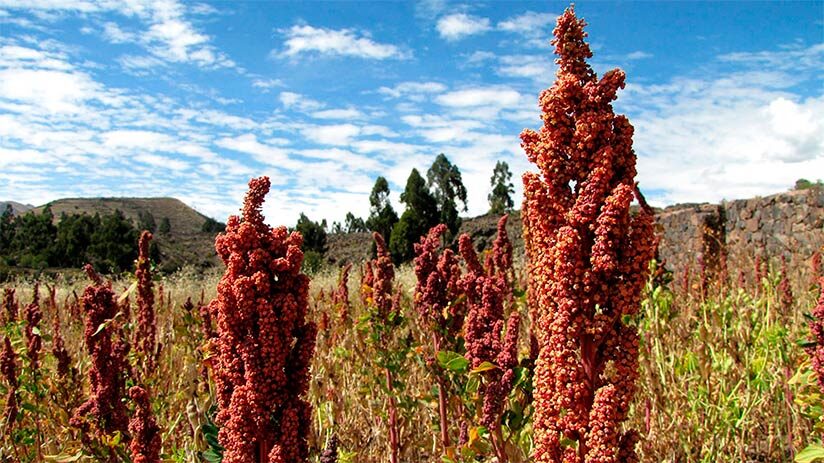Peru is undoubtedly one of the most diversified places in terms of nature and landscapes. And consequently, it has a great variety of things to experience. Not only will you be able to enjoy the wide biodiversity in Peru, but also numerous nutritious meals and unique dishes to enjoy. And perhaps among all the foods available in Peru, the best known of them is the ancient cultivation of quinoa. It was one of the main crops of the Incas, and a staple in the diet of the inhabitants. But, what makes quinoa so popular? And what makes quinoa a superfood? That is why together with Machu Travel Peru we have prepared a small article where we delve into Quinoa. Dare to learn about the most important characteristics of this wonderful Peruvian food.
A complete guide to everything you have to understand about Quinoa
- What is quinoa?
- Quinoa history
- Peruvian Quinoa variety
- 8 benefits of Quinoa
- Where to buy Quinoa
- What does Quinoa taste like?
- How to cook Quinoa
- Cooking Quinoa FAQs
- Peruvian Quinoa recipes
What is quinoa?
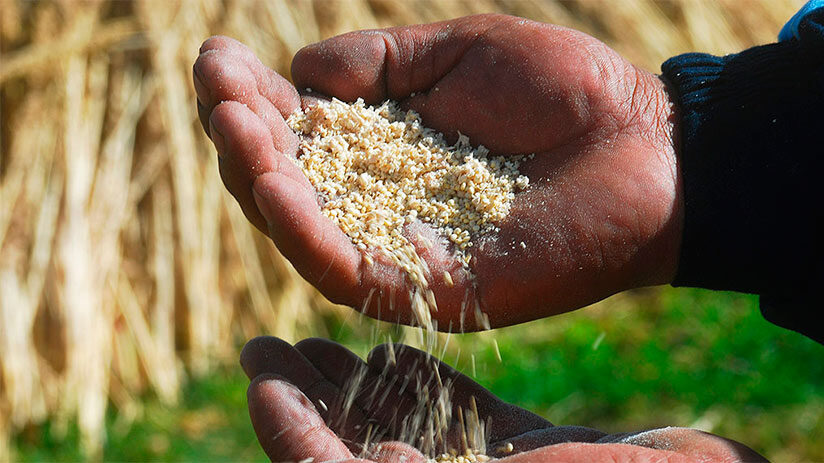
Quinoa is an Andean grain cultivated in Peru and Bolivia highlands since 5000 years ago . Its high energy value, situated in the seeds, its resistance to heights, frost, aridity and heat classified it as a sacred food by the Incas, and a “marvel” for nutritionists and general people. Being able to ingest also its stems and leaves. The seeds provide high levels of dietary minerals, fibers, B vitamins, and proteins.
A. Where grown it?
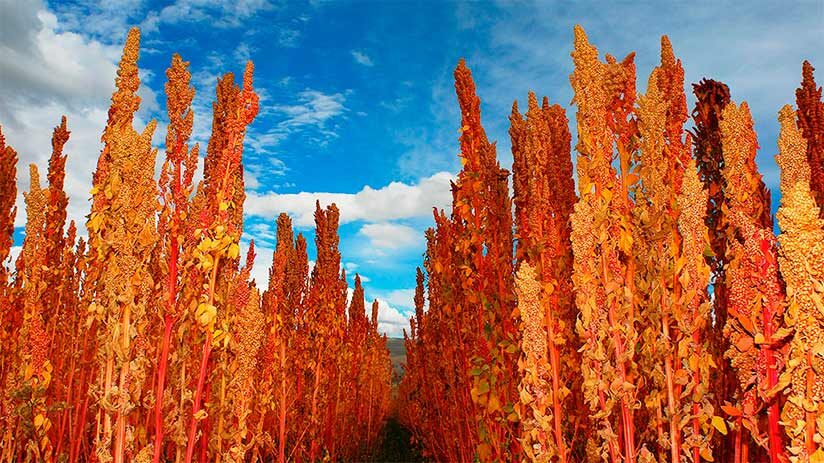
Quinoa was known among the Incas as the “mother grain”. It is a seed species of part of the family known as Chenopodium. And this forms part of a subspecies related to the Goosefoot family. This herb can grow between seven and three feet tall. It is a plant that supports harsh climates, preferring colder temperatures characteristic of the Peruvian Andes. It is also usually a fairly robust plant, being able to grow in fairly poor soils. Therefore, this plant grows naturally in the Andean region of Peru, and it has been cultivated for thousands of years.
B. Quinoa is not a cereal
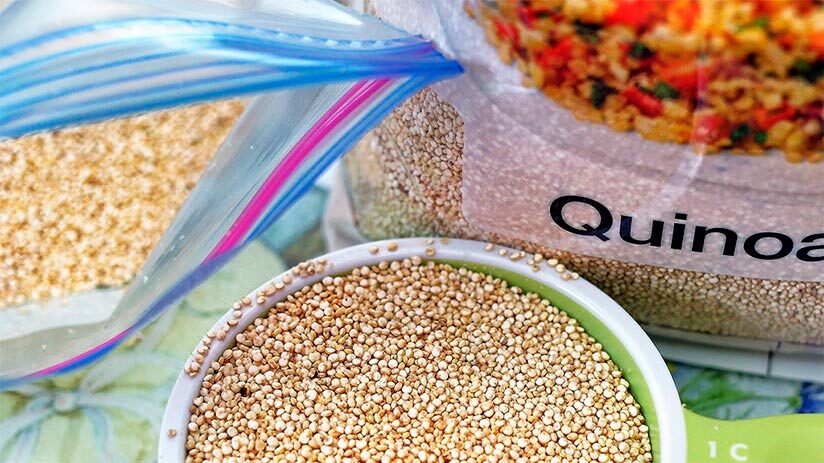
It is often mistaken for a kind of whole grain, but it could be considered a pseudocereal. And being a relative of the goosefoot species, the herb is much more like beets and spinach than whole grain. So it has more to do with these plants than with oats or wheat. Also, both the leaves and seeds of this plant are edible.
Quinoa is classified as one of the many Peruvian superfoods. And even though it is not gluten-free, it has far more minerals, vitamins, proteins, and fiber than any other species of seeds and grains available.
Quinoa History
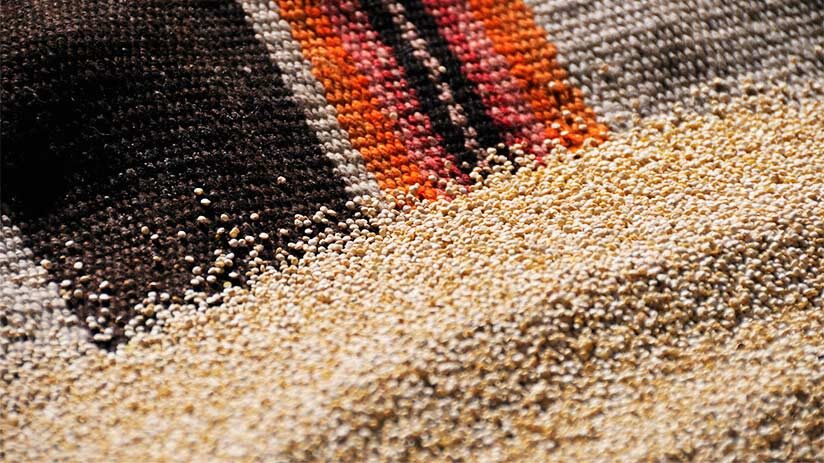
Quinoa is an important part of Peruvian history. It originated in the highlands of Bolivia and Peru. Surprisingly, the seed was cultivated in the aggressive Peruvian weather of Altiplano and was initially used only to feed livestock. But then humans also started using it for their own consumption. There is not much archaeological or linguistic evidence for quinoa. Nor are there too many religious rites associated with the use of grain. But some findings in the Ayacucho area suggest that the domestication of quinoa occurred in 5000 BC. Quinoa has also been found in different tombs in the regions of Peru.
Within ancient civilizations such as the Incas and the pre-Inca cultures, it was food with a leading role. For both modern Quechua and Aymara peoples, even it continues to be so nowadays. In fact, the harvest is used as much as for the nutrition of the people, as to be exported to other regions and countries, and as a sacred element during the different rituals. Therefore, It can be offered as a tribute at many religious festivals. If you are lucky, within the many tours in Peru, you will be able to taste this incredible food and know the story behind it.
Years later, the Spanish destroyed most of the Quinoa fields during the conquest, and they discarded this food (still not knowing its benefits) by bringing their own grains. By this time, the wheat and barley of Europe were considered better dice that were easier to grow and much more fruitful. So the food prepared in Peruvian lands lost much of its quality and value during the following years. Happily, the different isolated Andean villages continued with their traditional crops. Therefore, this Andean product managed to survive and, nowadays, with its recognition and its great demand in European countries, it is one of the number one products in Peru.
Peruvian Quinoa variety
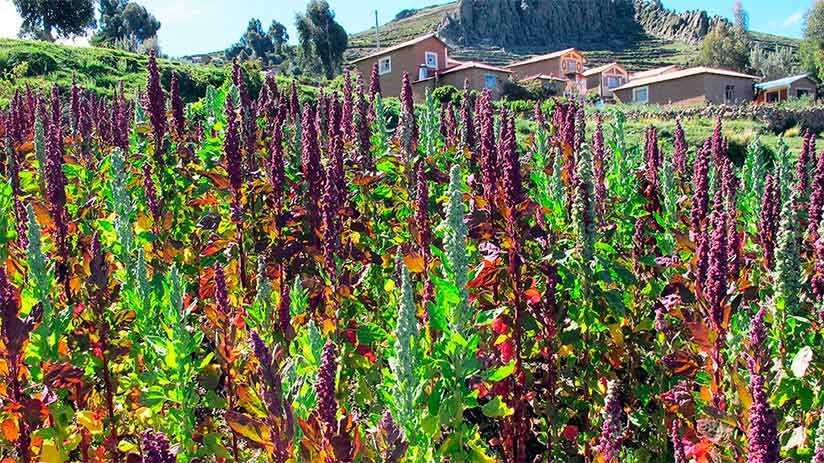
There are over 1800 subspecies of this ancient Inca crop, and the seeds come in a wide variety of colors. But generally, the most common colors in this plant are white, red, and black. Also, these amazing seeds can also be seen in purple, pink, gray, orange, and yellow colors. But with the growing popularity of this food and its large crops, many varieties of quinoa have been forgotten. Export demand has focused on very few of the many varieties, leading farmers to abandon many of these other unknown varieties. But in general, among quinoa, you can find the following varieties.
1. White quinoa
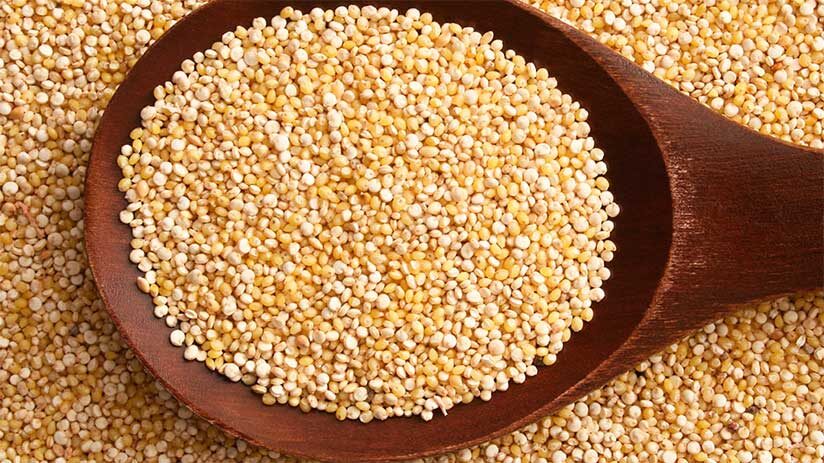
This white seed is one of the best-known and most widespread varieties in the world. It has a light flavor, it cooks faster, and its texture is fluffy and pleasant. Unlike the red and black varieties, this white seed is not crunchy at all. Undoubtedly, this is one of the most classic varieties of Peruvian gastronomy.
2. Red quinoa
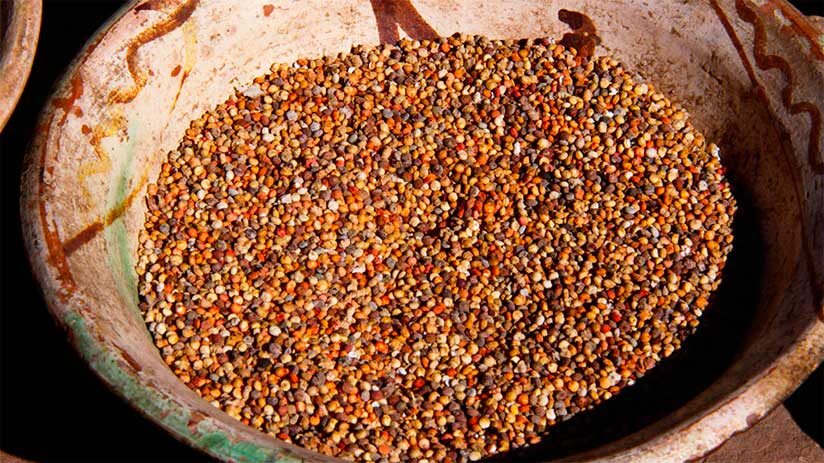
The red seed has a much more pronounced and rich flavor that closely resembles walnuts. It also has a much softer texture and tends to retain its characteristic shape after cooking. It is a great option to use in salads.
3. Black quinoa
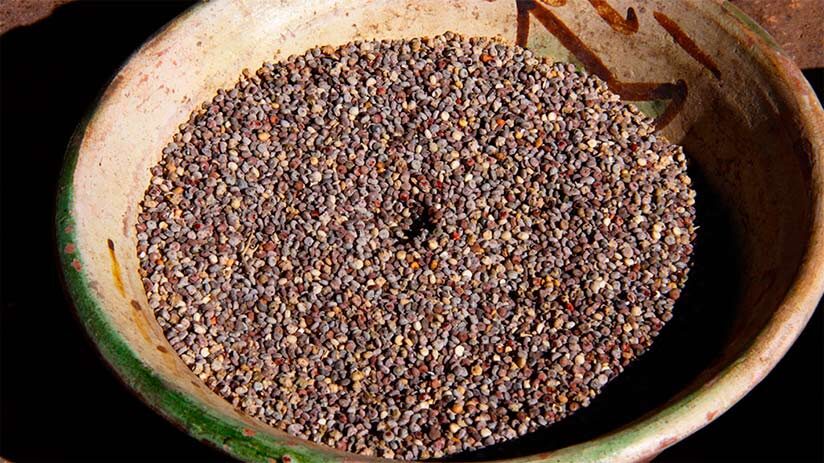
Unlike the other varieties, this seed has a more earthy and sweet flavor. It has a texture quite similar to that of the red variety, and usually maintains its characteristic color after cooking.
8 benefits of Quinoa
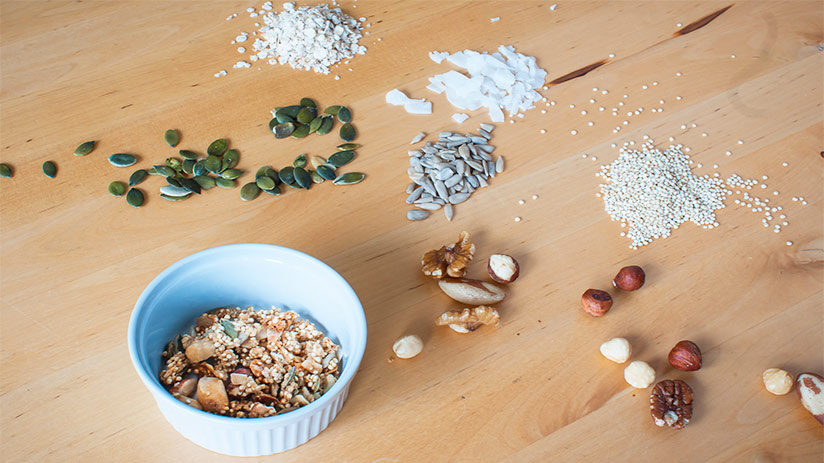
Quinoa is one of those foods that is as healthy as it is popular. And it is not surprising with the many benefits it has going for it. Quinoa has a high level of protein, fiber, and B vitamins. Despite being fluffy similar to rice, a cup of it contains 5 g more fiber and double of protein than a cup of rice, without mentioning that quinoa has fewer calories and carbohydrates than the white grain.
For this reason, we have decided to name the most notable benefits of Quinoa in Peru.
1. Very nutritious
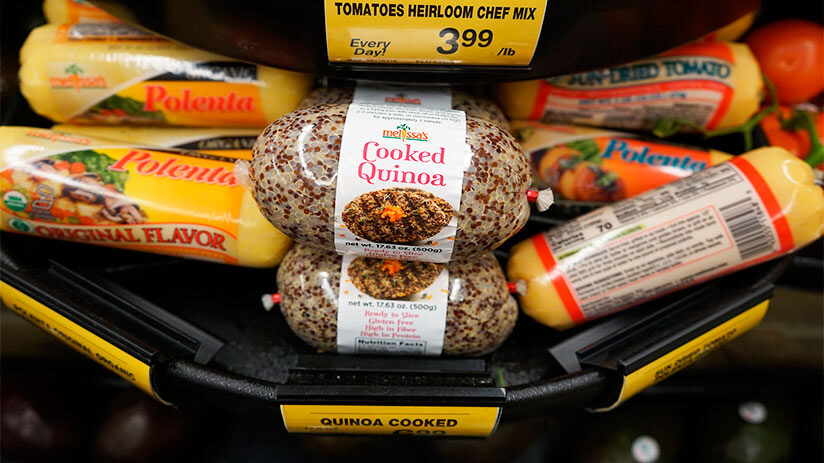
Quinoa is a seed that is prepared and eaten as if it were a grain. And its nutritional content often rivals a host of superfoods. In a cup of about 185 grams of cooked quinoa, you can find the following amount of nutrients.
- 5 grams of fiber
- 8 grams of protein
- 9% of the RDA for Potassium
- 13% of the RDA of Zinc
- 15% of the RDA for Iron
- 50% of the recommended daily amount of Manganese
- 30% of the RDA for Magnesium
- 28% of the RDA for Phosphorus
- More than 10% of the RDA of vitamins B2, B6, and B1
- Some small amounts of B3 (niacin), Calcium, and vitamin E
- 19% of the RDA for Folate
- 18% of the RDA for Copper
The 185-gram cup equates to about 222 calories with 4 grams of fat and about 39 grams of carbohydrates. It also contains a small amount of omega-3 fatty acids.
2. Contains more fiber than most grains
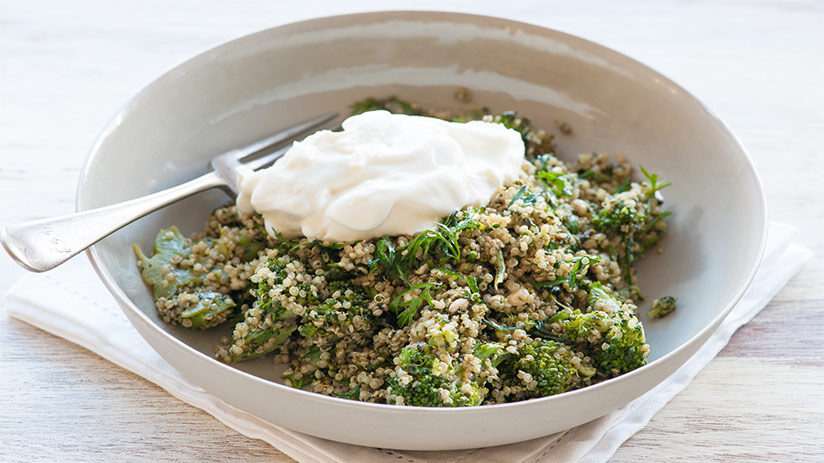
Another great benefit of Quinoa is that it is high in fiber. A study, that analyzed about 4 varieties of quinoa, found approximately between 10 and 16 grams of fiber for every 100 grams of Quinoa. This balances to about 27 to 17 grams per cup. This is a considerable amount since it is usually double that of most grains. Although, boiled quinoa contains much less fiber by absorbing more water.
Despite this, most of the fiber is insoluble. And insoluble fiber doesn’t usually have the same health benefits as soluble fiber. Despite this, the soluble fiber content in quinoa is still pretty decent. Since you can find between 1.5 grams to 2.5 grams of soluble fiber per 100 grams of quinoa.
3. It Is gluten-free
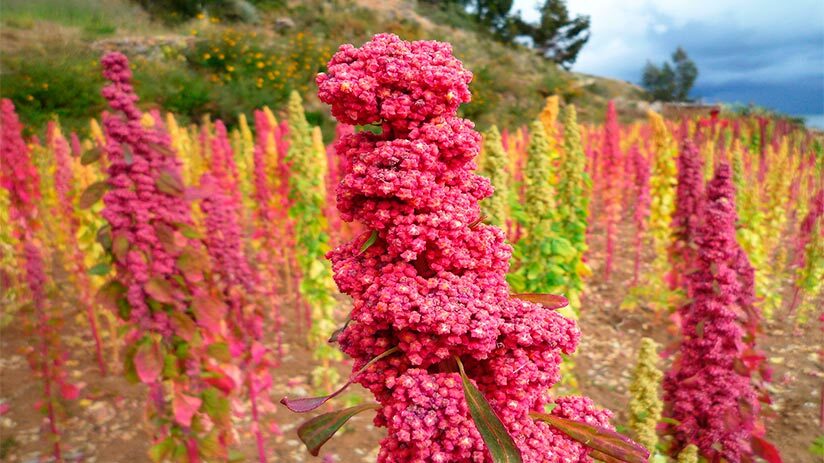
A gluten-free diet can bring numerous health benefits, especially if it is based on foods that do not contain it naturally. In this category can be situated Quinoa, it is an excellent alternative to include in the diet of those who seek to avoid gluten. Even, some researchers consider quinoa one of the best ingredients for those who don’t want to give up on bread or pasta. Some studies even show that it can replace refined tapioca, potato, corn, and rice flour. Dramatically enhancing the value of antioxidants and nutrients in your diet.
4. High in essential amino acids and proteins
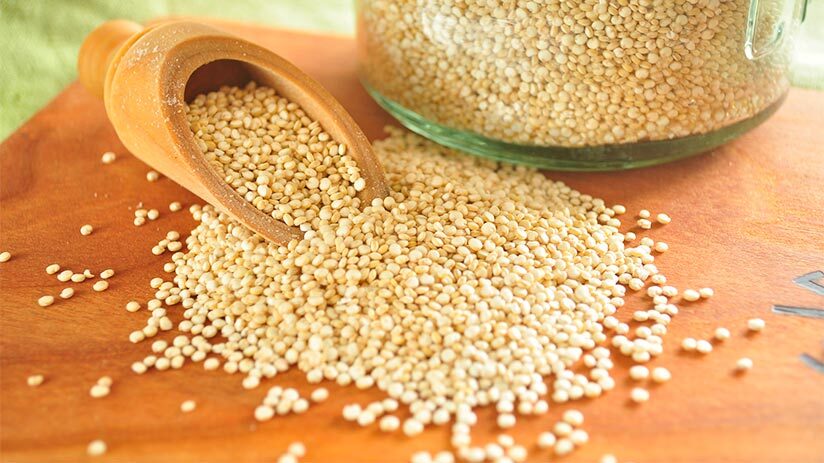
Our body cannot naturally produce the nine essential amino acids of which protein is composed. So it is necessary to include these in our diets. If a food contains all nine essential amino acids, it is called a complete protein food. And many foods of plant origin are usually deficient in some essential amino acids, such as lysine. But quinoa contains the nine essential amino acids because it is a Gluten-free whole carbohydrate and a complete protein at the same time. And being such a great source of protein, it becomes one of the favorite foods of vegetarians.
5. It has a low glycemic index
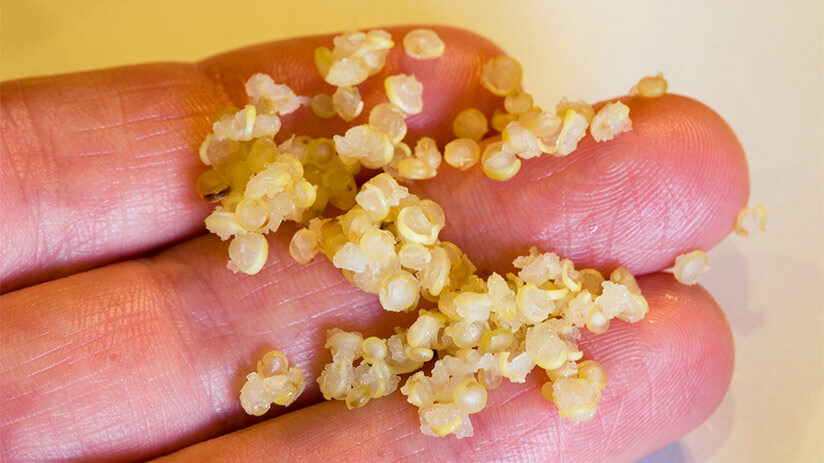
Quinoa has a fairly low glycemic index. When we talk about the glycemic index, we mean the measure of how quickly a food raises blood sugar levels. And having a low glycemic index is good for optimal blood sugar control. Quinoa has a glycemic index of 53, which is considered relatively low.
Eating foods with a high glycemic index has consequences that contribute to obesity and stimulates hunger. In addition, these types of foods are linked to other chronic diseases such as heart disease and type 2 diabetes. Although quinoa has a low index, it is still a high carbohydrate food. Therefore, if you are on a low-carb diet, quinoa may not always be your option.
For this reason, quinoa consumption combines with a healthy diet is perfect for losing weight. Remember that it contains an insoluble fiber that provides the feeling of satiety in the body, decreasing appetite and improving the fast metabolism, making us more active.
6. Has favorable effects on metabolism

Being a superfood high in nutrient content, it is understandable how quinoa can aid metabolic health. To date, there are two studies examining the effects of quinoa on metabolic health in humans and animals.
The human study found that the use of quinoa significantly reduced blood sugar, triglyceride, and insulin levels. Especially if quinoa is replaced by typical gluten-free bread and pasta.
Nowadays, new studies and research continue to study the benefits of quinoa on metabolism. In animals on high fructose diets, quinoa is known to inhibit the negative effects of fructose. But there is still a long way to go to fully understand all the hidden benefits of this superfood.
7. It is rich in antioxidants
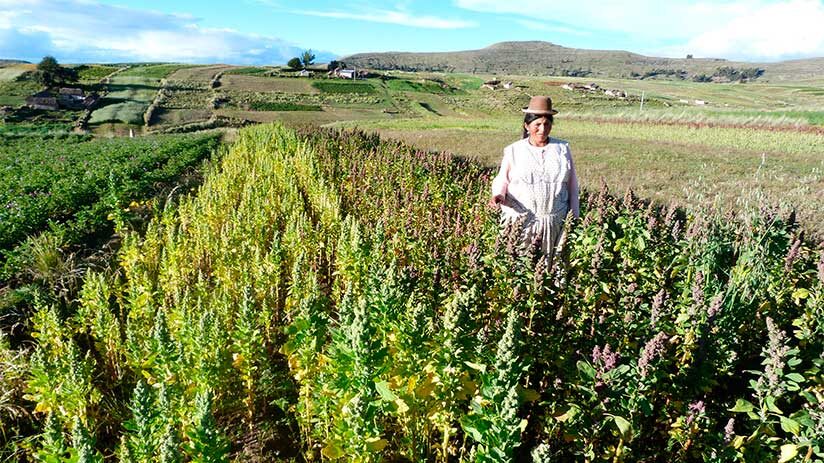
Quinoa, among its many properties, is rich in antioxidants. Antioxidants are popular substances that neutralize free radicals. They are believed to help fight aging and many other diseases. There was a study that investigated the antioxidant levels in five kinds of cereal, two types of legumes, and three pseudo-cereals. The study found that quinoa had the highest nutritional content among all the ten foods. And it is known that when the seeds are allowed to sprout, the content seems to increase even more.
8. Possible benefits of long-term consumption
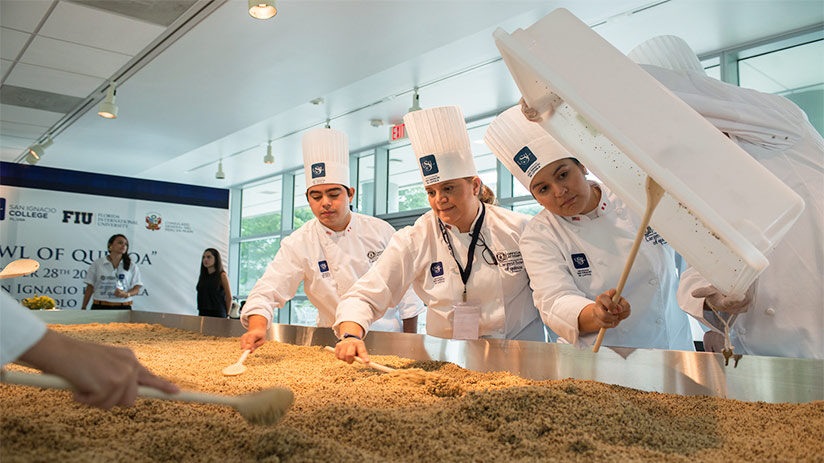
The amount of research on quinoa has grown considerably over the years. And a lot is due in part to the huge popularity it began to take in 2014. But a large part is due to the undeniable health benefits. This pseudocereal is very rich in nutrients and reduces the risk of several diseases. In addition, it is an ideal alternative full of proteins to replace some foods in your diet.
Whole grains like Quinoa are known to be preventative for certain types of cancer. This is due in large part to the high levels of fiber. A study belonging to The Journal of Nutrition suggests how the fiber in whole grains helps reduce levels of bad cholesterol, also called LDL cholesterol. Which potentially reduces the risk of gastrointestinal cancers such as the colon.
In addition, another study suggests that consumers of foods high in magnesium have a lower risk of strokes. And quinoa contains great levels of magnesium. So, eating quinoa regularly has benefits for your heart health. So, is it ok to eat quinoa every day? Yes, yes it is. Many vegetarians even do it.
Where to buy quinoa
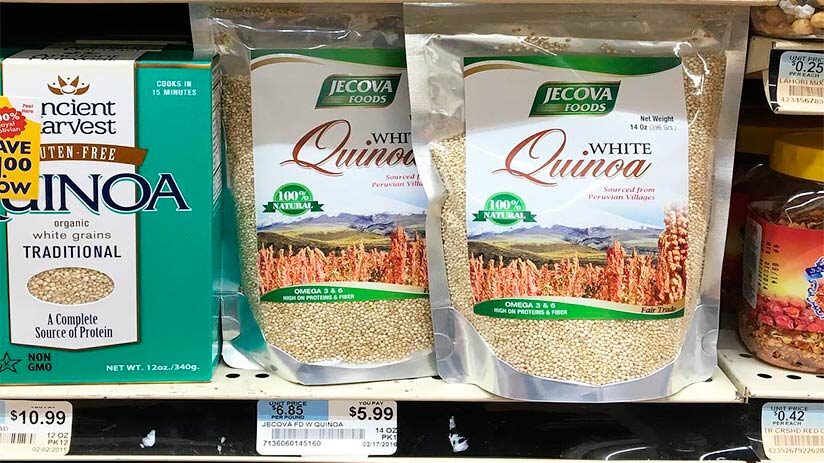
As quinoa is an Andean superfood cultivated in Peru many years ago. You will find it in the International food section of your local market or supermarket. Also, it used to be located among rice, and pasta. If you search for packaged quinoa, you will have to go to the seasoning packets sections, among couscous mixes and other products. Also, if you are in an organic market, quinoa is used to be located in the baking section.
It is known that in United States supermarkets, this Peruvian grain is present in three varieties, previously described in this article, red, white, and black. But, If you want to start consuming it, we recommend you start with the white variety. It has a neutral nutty flavor, more pleasant. The other variants, red and black, have a more dry sensation with a stronger earthy flavor.
What does quinoa taste like?
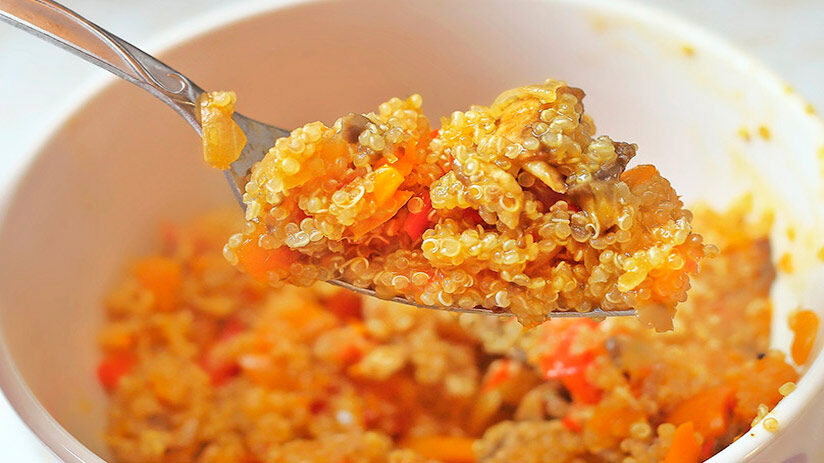
This Andean food will surprise you in many ways and the most important of them, apart from its nutritional value, is its taste. Quinoa has a nutty flavor with a fluffy and creamy texture that is chewable at the same time. Therefore, it is perfect to replace the rice and other soft grains in many dishes because its texture absorbs the stews and juice of foods that it accompanies. Quinoa, a Peruvian superfood that has a good flavor and high levels of nutrients at the same time, is unbelievable!
How to cook quinoa?
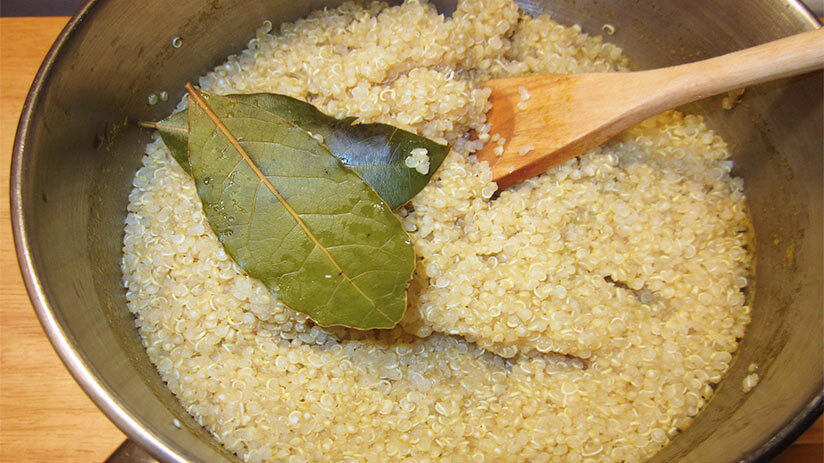
Another advantage of quinoa in front of rice and other grain foods is the ease of its preparation.
- You have to rinse the quinoa very well with cold water and a fine-mesh sieve (to remove excess saponin, which gives it a thick, soapy, and bitter taste on its own) And don’t trust quinoa packed, despite being rinsed previously in the factory, you will have to rinse it again, only for precaution.
- Next, put the quinoa inside a pot and cover it with hot water, even better, with vegetable or chicken broth (a portion of 1 cup of quinoa by 1 3/4 of water) Add a couple of bay leaves, salt, and leave to cook it over low heat for 15 minutes approx. Until seeing the beans fluffy and steaming. It means that quinoa grains absorbed the amount of water needed.
- Your quinoa portion is ready to serve! Finally, drain excess water with a sieve, and done! It can replace the rice in many dishes and can be served as a stew. Of course, you will have to add other ingredients like cheese, and milk inter alia.
But, don’t be wrong, quinoa can be an excellent accompaniment to both sweet and savory meals, like stews, marinades, roasts, salads, cakes, and even breakfast. Therefore, we prepare a selection of the most delicious Peruvian recipes with quinoa to celebrate and enjoy this important food.
Cooking Quinoa FAQs
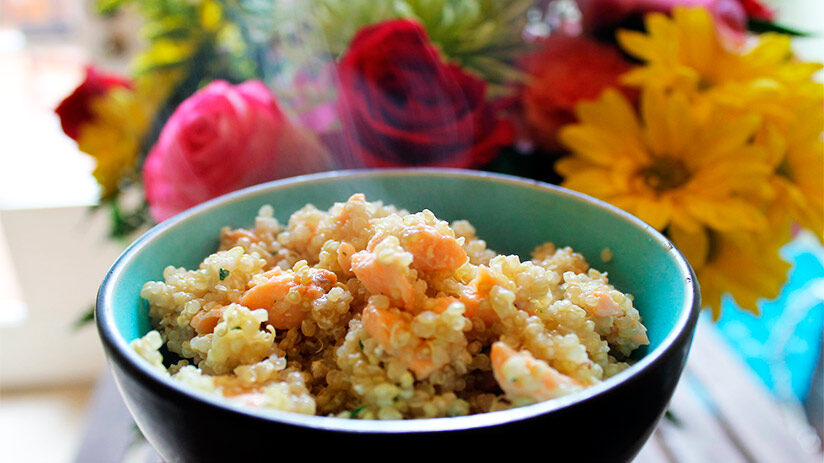
However, If it has not been clear to you how to prepare Quinoa, do not worry, here you will have some frequently asked questions about how to prepare Quinoa and its secrets.
- Should I rinse the quinoa?
As we menthioned, yes. You have to rinse the quinoa to eliminate the saponin, which gives the Andean grain a thick, soapy and bitter taste.
- How much cooked quinoa yields a cup of dry quinoa?
One full cup of dry quinoa yields about three full cups of cooked quinoa.
- How much liquid is needed to cook quinoa?
To cook well a cup full of quinoa, we need a proportion of 1 ¾ cups liquid.
- How to make quinoa not so bitter?
Again, rinsing very well to remove the excess of Saponin (responsible for the bitterness of Quinoa) will be the key to remove the bitterness from the Andean cereal.
- How to make Quinoa taste better?
We recommend three tips to better the taste of Quinoa. First, consume it in chicken or vegetable soups. Second, you can add ½ teaspoon kosher salt in each quinoa cup, before to cooked it. Finally, during the cook, you can add some spices like a sprig of fresh rosemary, a couple of bay leaves, a pinch of black pepper, or a clove of crushed garlic.
- Can I use my rice cooker to cook quinoa?
Of course, you can use it. Only, use the same liquid-to-quinoa quantity and follow the instruction to cook of your rice cooker.
Peruvian quinoa recipes
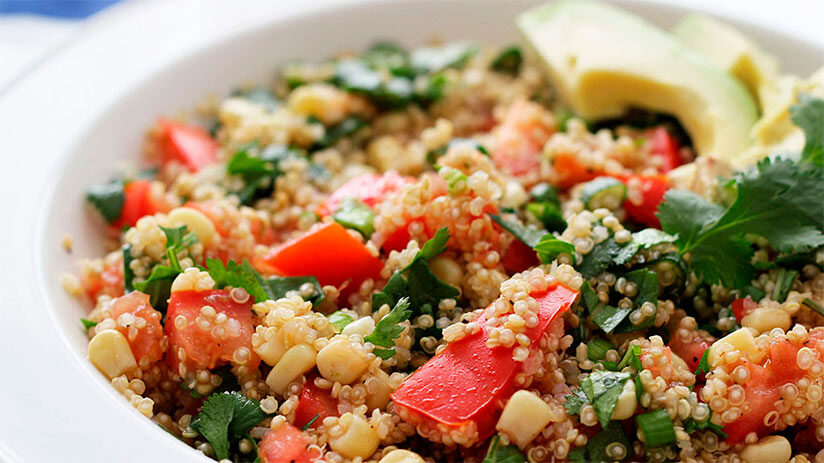
Quinoa can be cooked in a number of different ways. As we mentioned, the natural grain itself takes no more than 15 minutes to cook. Although, if you are cooking the black quinoa variety, it may take a little longer. Quinoa flakes, on the other hand, take no more than 2 minutes. Making them an excellent breakfast or snack to go.
Today, this ancient Inca seed is used in a wide variety of traditional sweet and savory dishes. And with great nutritional value, it is not surprising that it appears even in fusion food recipes. A clear example is the Chaufa de Quinoa, this iconic dish is not very different from what everyone knows. Nowadays, chefs try to renew and revolutionize their different dishes in a new style of cuisine, the Novo-Andean cuisine. Many times you will see international dishes with iconic traditional touches. And quinoa has a strong role in this regard. But we also recommend that you try the popular quinoa salad, quinoa soup, and quinoa stew. Very popular options in the Andean regions and recipes that you will have to learn to take home!
1. Chaufa de quinoa (Quinoa Chaufa)
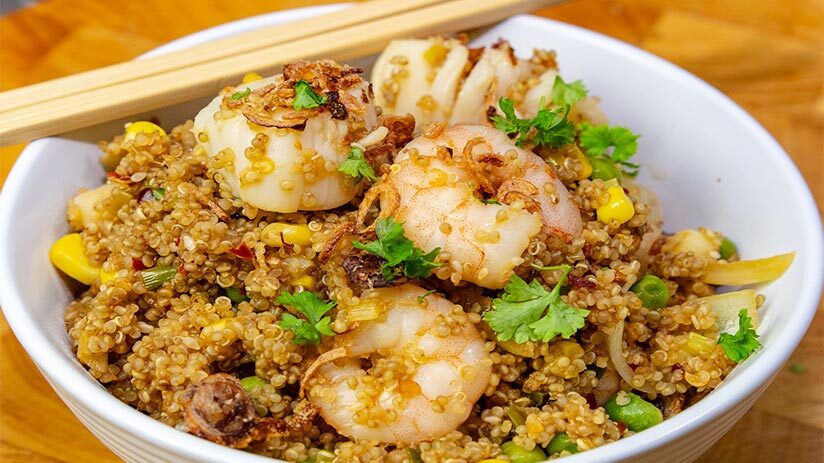
This is an alternative to the traditional Peruvian rice Chaufa. This dish is characterized by the fact that the rice is replaced by the delicious quinoa.
Ingredients:
- Dry Laurel
- White quinoa (400 grams)
- White Oil
- Broccoli
- Chinese Onion (Chives)
- Kion
- Garlic
- Dark Soy Sauce
- Eggs (3)
- Red pepper
- Snow peas
- Chicken (400 grams)
Steps:
- First, you should wash the quinoa. Then cook it for about 10 minutes. Let it rest in a colander.
- Chop the chives and garlic.
- Cut the chicken into small pieces.
- Make omelets with the 3 eggs. Cook these and then cut them into small squares.
- Cut the broccoli into small pieces and cook it for no more than 15 minutes.
- Cut the pepper into small squares.
- Cook the chicken in a wok or pan. Spice with salt and pepper.
- In the wok, fry the ginger, garlic, pepper, snow peas, and chives with a splash of oil.
- Slowly add the quinoa and sauté. Then add soy sauce while adding the chicken, the chopped omelets, and the green part of the chives.
- Done! Ready to enjoy.
2. Ensalada de quinoa (Quinoa Salad)
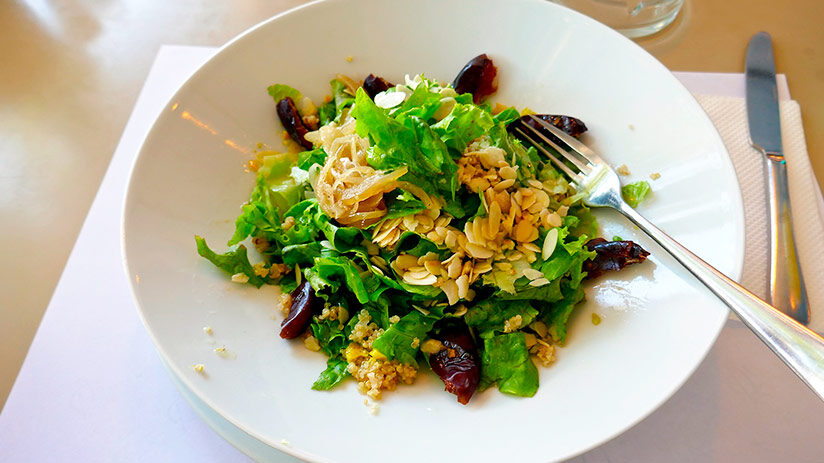
This salad is a very healthy option, and depending on your taste you can add whatever you like! Here we will show you a quinoa salad with avocado and tuna.
Ingredients:
- White Quinoa (125 grams)
- Avocado (1)
- Cherry tomatoes (1 handful)
- Can of Tuna (1)
- Lemon (1)
- Parsley (1 branch)
- Salt and pepper
Steps:
- Wash and cook the quinoa for about 10 to 15 minutes.
- Let the quinoa rest until it cools, as it is a cold salad.
- While the quinoa is cooling, chop the parsley. Cut the Lemon too.
- Chop the handful of cherry tomatoes in half.
- Cut the avocado into small pieces.
- Put your chilled quinoa in a bowl. Mix all ingredients. Including tuna.
- Sprinkle the parsley and garnish it with lemon and salt. If you like, you can add some Pepper too.
- Ready to enjoy!
3. Quinoa a la Huancaina (Quinoa with creamy cheese sauce)
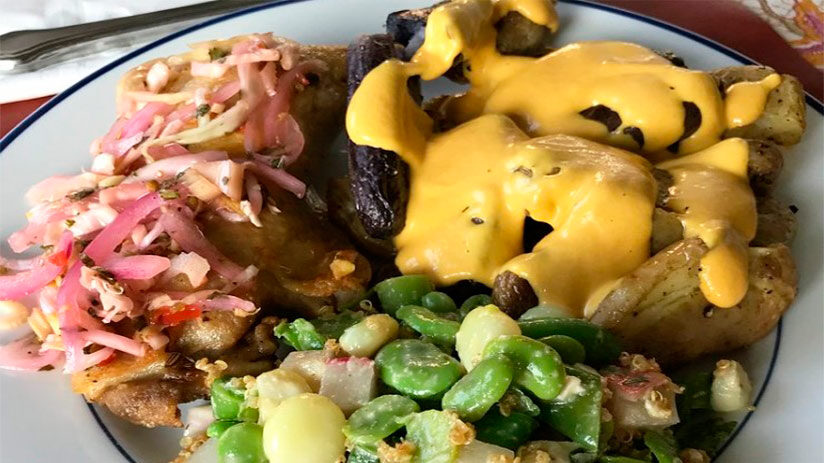
This delicious recipe includes the use of quinoa in the traditional dish. You can enjoy the delicious Huancaina sauce with this superfood.
Ingredients:
- White Quinoa (2 cups)
- Yellow Potato (4 potatoes)
- Eggs (2)
- Huancaina Cream
- Organic Lettuce (2 leaves)
- Salt, Pepper, Cumin, and Oregano
- Brown olives
Steps:
- Wash the Quinoa and cook it for 15 minutes. Add salt, pepper, oregano, and cumin to taste.
- Boil the eggs and potatoes.
- Season the quinoa with a little Salsa Huancaina.
- Wash the lettuce.
- To serve. First, put the lettuce, then the potato cut into slices. Put the seasoned quinoa. On top of this add the Huancaina Sauce to taste along with the eggs and olives.
- Enjoy!
4. Tamal de quinoa (Quinoa tamale)
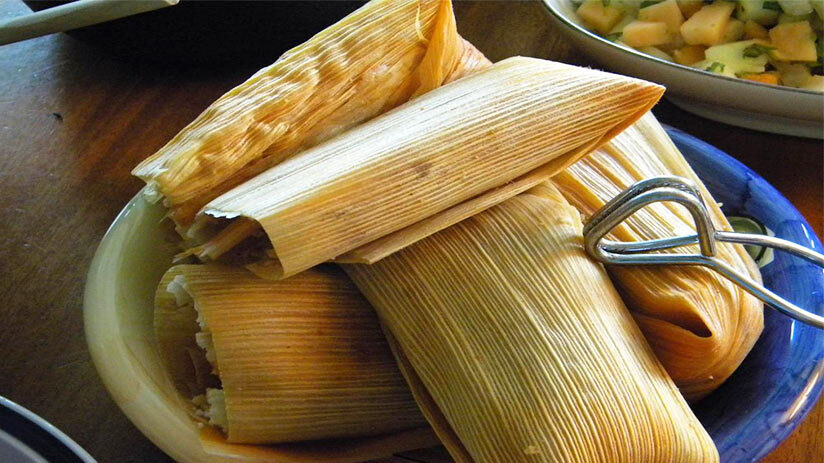
This nutritious and delicious dish is one of the many traditions of Peru. So the Tamal de Quinoa could not be missing.
Ingredients:
- White Quinoa (2 cups)
- Vegetable oil
- Ground Chili Pepper
- Salt
- Banana leaves
Ingredients for filling:
- Chicken (250 grams)
- Onion
- Garlic
- Egg
- Olives
Steps:
- Washing and cooking the quinoa.
- Prepare the dressing with vegetable oil and Ají Panca pepper. Add the cooked quinoa. Add salt to taste. Let it rest.
- For the filling, it is necessary to fry ground garlic, Ají Panca, and diced onion.
- Cut the chicken and add it to the filling preparation. Let the filling cook.
- Boil the eggs.
- To assemble the tamale we spread the banana leaf. We place the seasoned quinoa.
- On top of this, we place the filling. Also, a boiled egg and olives.
- Shape the tamale and close it with strips of banana leaf.
- Cook in water for about 30 minutes.
- Enjoy!
5. Causa de quinoa
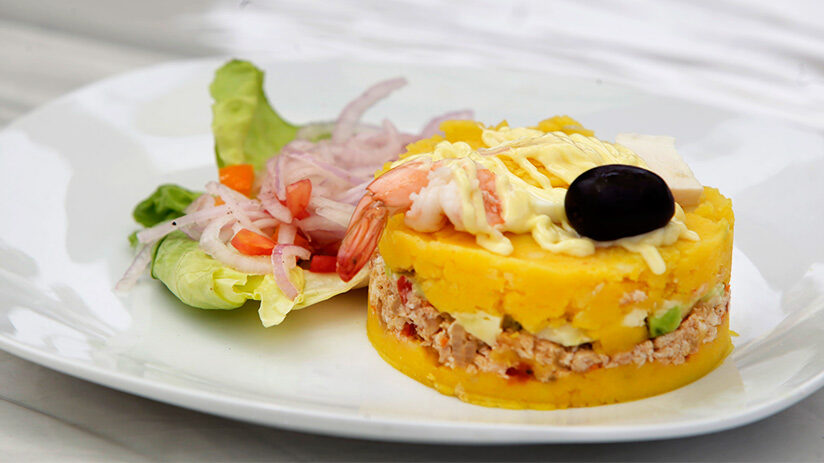
Causa is already a traditional dish within the varied gastronomy of Peru. And the Causa De Quinoa dares to go further with the delicious taste of pseudocereal.
Ingredients:
- White Quinoa (1 and a half cups)
- Lemons (4)
- Carrots (2)
- Vegetable oil
- Medium Potatoes (2)
- Salt
- Chicken (½ kilogram)
- Peas (100 grams)
- Red Pepper (1)
- Eggs (2)
Steps:
- Washing and cooking the Quinoa.
- Cooking potatoes separately.
- Cook carrots and then blend them.
- Knead the quinoa together with the cooked potatoes. Add the blended carrot. Add salt and a tablespoon of oil. Let it rest.
- For the filling, make a dressing with pieces of carrots, peas, and water. Let it cook.
- Add diced chicken, blended bell pepper, and salt to taste.
- Serve in such a way as to layer the quinoa and potato batter.
- Then add the filling and another layer of dough. Decorate with eggs.
- Enjoy!
“NEVER EAT ANYTHING YOU CAN’T PRONOUNCE. EXCEPT FOR QUINOA, YOU SHOULD EAT QUINOA”
As you will see, quinoa is a Peruvian food with great benefits and properties that you should not rule out knowing and trying. And with its great international demand, you can find it in any supermarket or health food store. The safest thing is that you can find it in your country of origin. But if you are looking to taste and enjoy the real quinoa, you have to travel to Peru. You will have options of incredible dishes and to buy this incredible food from its true source. Together with Machu Travel Peru, we hope we have been of help. And remember, if you want to know more about quinoa, Peruvian food, or tours in which you can taste them, don’t hesitate to contact us at any moment!
